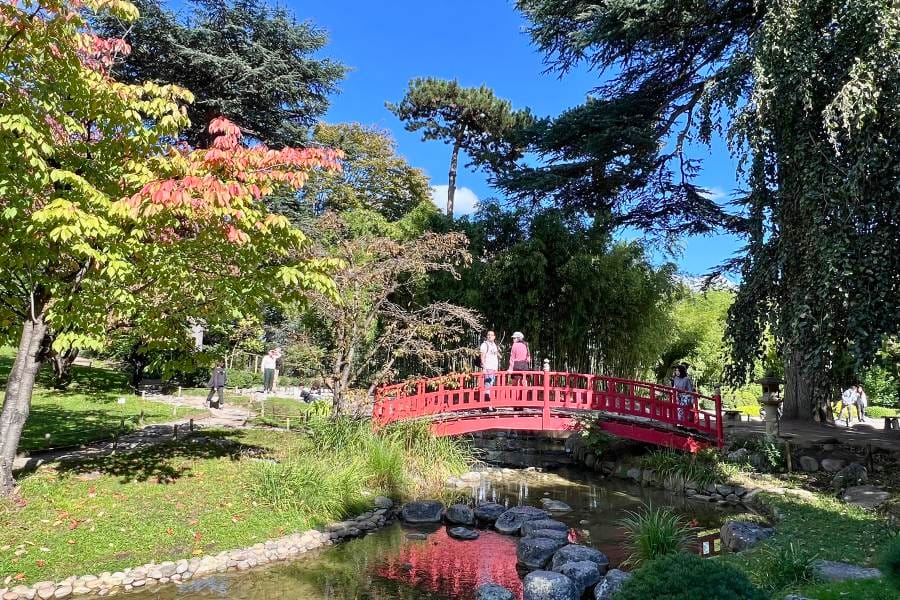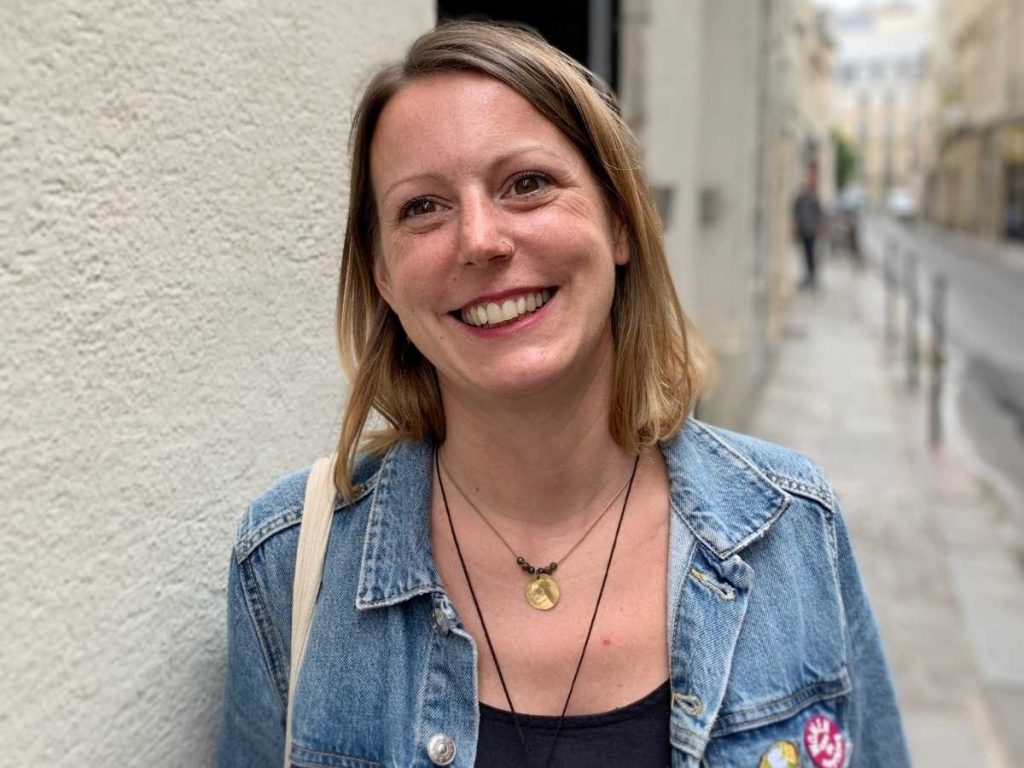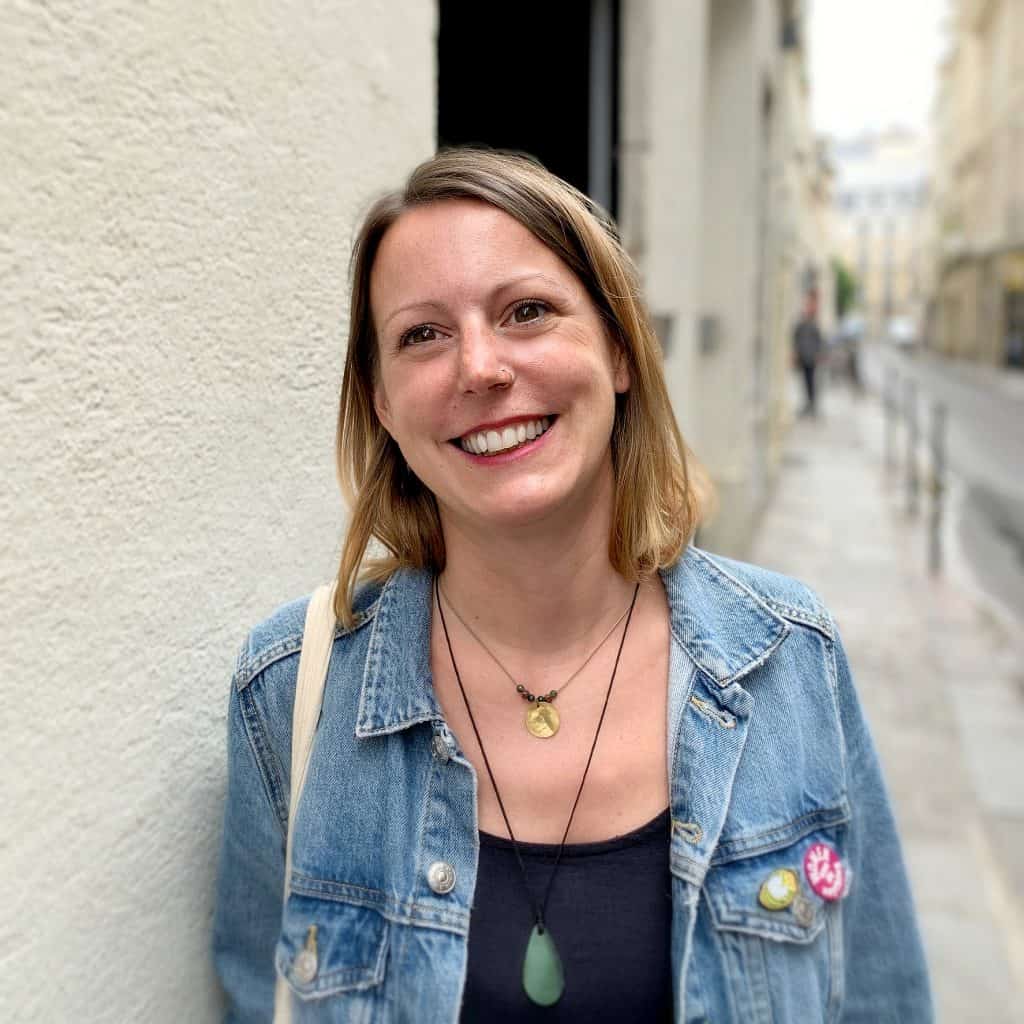
The Albert Kahn Museum & Gardens are one of my favorite hidden spots in Paris. While the city is known for its grand gardens like the Jardin du Luxembourg and spectacular museums, this one feels entirely different. It’s smaller, more intimate, with a peaceful atmosphere that pulls you in.
Every corner feels like a discovery—like a quiet, lush retreat from the city’s busyness. If you’re searching for a unique, serene spot to add to your Paris agenda, this is it!
I visit at least once a year and always find something new to love. Earlier this year, I brought my gardening-enthusiast parents, and even they were amazed by the landscape.
In this article, I’ll share the highlights of the Albert Kahn Departmental Museum, from its beautifully designed garden sections to the extensive photography collection. Whether you’re a fan of peaceful retreats or hidden gems in Paris, this garden and museum offer plenty to explore.
If you purchase through links on this site, I may earn – at no cost to you – a small commission. This helps me cover my costs and keep my website running. Thank you so much for your support 🙂 Learn more


Who Was Albert Kahn?
Albert Kahn (1860–1940) was far more than just a successful banker—he was also a passionate philanthropist and a dedicated pacifist. After making his fortune in banking, Kahn turned his attention to what really mattered to him: promoting peace and understanding across cultures.
He used his wealth to fund education and initiatives that aimed to bring the world closer together.
One of his most impressive efforts was The Archives de la Planète, where he sent photographers to over 50 countries between 1908 and 1931 to capture everyday life in stunning color—at a time when most photography was still black and white.
The result? Over 72,000 color photographs and thousands of meters of film, showcasing the diversity of humanity.
Kahn truly believed that understanding different cultures could lead to a more peaceful world, and his legacy lives on today at the Musée Départemental Albert-Kahn in Paris. It’s a beautiful blend of his work and vision for a more connected world.


Archive de la Planète
When you visit the Albert Kahn Museum, your first stop is the Archives de la Planète, the incredible photography exhibition.
In 1912, Albert Kahn set out on an ambitious mission to create what he described as
“a photographic inventory of the surface of the globe, occupied and organized by man, as it presents itself at the beginning of the 20th century.”
This ambitious idea became The Archives de la Planète—a massive documentary project that’s now the heart of the Musée Départemental Albert-Kahn.
The result? A remarkable collection of over 72,000 color photographs from more than 50 countries, taken between 1908 and 1931. Kahn used the groundbreaking autochrome process, capturing everyday life in vivid color—a rare sight at that time. The collection is truly one-of-a-kind, documenting a world in transition.


But be prepared—the sheer volume of photos can be overwhelming. Thousands line the walls, and it’s striking to see people from a hundred years ago in color. It’s a reminder of how much and how little has changed.
You could easily spend hours here, but my tip is to head to the do dedo exhibit in the center of the museum. Here, each photo is categorized and comes with background information, making it a bit easier to digest and much less overwhelming.


The Jardin d’Albert Kahn
After the museum, it’s time to explore the gardens, which for many are the main reason to visit. Especially spring is a very popular time, of course, but the gardens are always beautiful, no matter the season.
To be honest, the first time I went, I didn’t even know there was anything beyond the gardens. Now, I find myself just as fascinated by the photography, but the gardens still hold a special place.
Albert Kahn’s gardens stretch across a 4-hectare area, surprisingly tucked between streets, houses, and schools. It’s kind of incredible—once you start wandering through, it feels like you’re miles away from the hustle and bustle of city life.
The garden is divided into sections, each offering a unique glimpse of different parts of the world. Walking through feels like you’re moving between landscapes, all designed to reflect Kahn’s vision of global harmony.


There’s always something new around each corner, making the experience both peaceful and full of discovery. The Jardin d’Albert Kahn is wihtout a doubt one of the most interesting and captivating parks in Paris.
Throughout the gardens, you’ll find small exhibitions that showcase not only the photographers Kahn worked with but also the flora and fauna of the regions represented in the garden. For example, the Vosges section dives into the biodiversity of that region.
Overview: Different sections of the Albert Kahn Garden
- Japanese Garden: One of my personal favorites, this area feels like stepping into a calm, meditative space. You’ve got serene ponds, traditional tea houses, a red guzei bridge and even koi carps.
- French Garden: This section has a more formal, symmetrical feel. The hedges are perfectly trimmed, and the flower arrangements are timeless and elegant. The square is surrounded by benches, making it a great spot to take a break or soak up some sun.
- Blue Forest and Vosges Forest: These wooded areas represent regions of France, particularly the Vosges. Walking through them, you really get a feel of being in a forest. It’s quite impressive.
- Orchard and Rose Garden: There’s also a beautiful orchard filled with fruit trees that’s especially lovely in late summer. And if you’re a fan of roses, you’ll love the rose garden, which bursts with color and fragrance in the warmer months.
- Winter Garden/Orangerie: Here’s the refined version:
The Orangerie is home to exhibitions on flora and fauna, but of course, you’ll also find various tropical plants here.
My tip: behind the building, there’s a staircase that leads up to the first floor, where you can catch a lovely view of the gardens. I only discovered it on my last visit.


The whole 4-hectare area is so well-designed, and it really gives you that peaceful vibe that reflects Kahn’s idea of blending nature and culture in harmony.
With all the different landscapes, plus the photography and nature exhibits, it feels like a little world of its own. It’s the perfect place to slow down and take it all in.
Practical Information: How to Visit
First of all, the Albert Kahn Garden and Museum aren’t located in the center of Paris, but in a suburb called Boulogne-Billancourt. But don’t let that put you off—it’s really no big deal.
Boulogne-Billancourt is well-connected by the Metro, and getting to the gardens from the city center is just a short 30-minute ride. Honestly, you probably won’t even notice you’re leaving town. It’s a smooth and easy trip that’s totally worth it for what awaits you.
- Getting there: Take metro line 10 to Boulogne – Pont de Saint-Cloud, and the gardens are a short walk from the station.
- Opening times: The gardens and museum are open Tuesday through Sunday, typically from 11h to 18h during winter, and until 19h in summer. Always check ahead, as times may vary by season.
- Booking info: Tickets can be purchased online via the official Albert Kahn Museum website or at the museum.


Personally, I always bought my tickets on site and never run into issues, not even on weekends during peak season.
Please note that the Albert Kahn Garden and Museum are closed from December 31 to January 12, on May 1, and on December 25.
All in all, the Musée Albert Kahn is a perfect little trip if you’re looking for something different and a non-touristy thing to do in Paris.
Whether you’re into photography or just want to wander through some stunning gardens, it’s well worth the short trip to Boulogne-Billancourt. You won’t regret it




Parisienne since 2006 🩷
Expert in: Parisian Life &
French Culture, Travel
Planning, Crochet & Food and Drinks
Join me on Facebook for updates and news about Paris.
Must Have Paris Travel Essentials
International Travel Adapter
Portable Charger for your Phone




